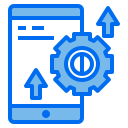Doing More With Less: Digital Tools for Nonprofit Efficiency
Chosen theme: Digital Tools for Nonprofit Efficiency. Welcome to a friendly, practical guide for impact-driven teams who want to free time for mission, not spreadsheets. Explore real stories, field-tested tips, and simple next steps. Share your favorite tools in the comments and subscribe for monthly playbooks tailored to nonprofit realities.


Donor CRM and Automation: Build Relationships at Scale
Data Hygiene Is Donor Care
Standardize fields, deduplicate contacts, and track consent preferences. Set rules for addresses, titles, and household records. A clean CRM reduces awkward mistakes and powers meaningful segmentation. Share your hardest data cleanup challenge; we will feature practical solutions in a future issue.
Automated Journeys That Still Feel Personal
Create gentle sequences for new donors, lapsed givers, and event attendees. Trigger notes based on behaviors, not guesswork. Mix automated reminders with genuine staff messages. Measure reply rates, not just opens, to keep stewardship human-centered.
A Quiet Win: From Volunteer to Monthly Donor
After an event, one nonprofit sent a two-step thank-you and a behind-the-scenes impact note. The volunteer replied with questions, received a personal answer, and became a sustained monthly donor. Automation opened the door; humanity closed the loop.
Communication and Knowledge Sharing That Reduce Noise
Channels With Purpose, Not Chaos
Use Slack or Microsoft Teams with explicit channel purposes: #announcements for one-way updates, #volunteers for coordination, #wins for morale. Schedule posts, set office hours, and pin key docs. Ask readers: what channel changed your team’s day-to-day the most?
A Living Handbook Beats Endless Onboarding Emails
Build a simple knowledge base in Notion or Confluence with onboarding checklists, program playbooks, and grant boilerplates. Link policies, embed how-to videos, and assign owners to keep pages fresh. New staff gain confidence faster and ask fewer repetitive questions.
Meeting Smarter, Meeting Less
Adopt written status updates before meetings and a shared agenda doc. Record decisions, owners, and deadlines in the same place every time. One conservation nonprofit cut average meetings by twenty minutes and redirected that time to fieldwork and partner outreach.


Impact Dashboards: Turn Data Into Decisions
Connect your CRM, email platform, and survey tool to Looker Studio or Power BI. Start with three core questions: What changed? For whom? At what cost? Build a single-page dashboard first, then add drilldowns only when needed.
Impact Dashboards: Turn Data Into Decisions
Use consistent colors, plain language labels, and weekly auto-refresh. Add context notes beneath each chart so numbers never travel alone. One organization replaced quarterly slide decks with a link, and board questions became sharper and faster to answer.

Create flows that add new donors to the CRM, tag them by campaign, and schedule a handwritten note task. Route form submissions to the right list and send a Slack alert. Keep logs to audit every step and catch issues early.

A food security nonprofit automated volunteer signups from a web form into shifts, confirmation emails, and a shared calendar. Staff reclaimed ninety minutes every week and used that time to call high-potential partners for deeper collaboration.

Name each automation clearly, version your changes, and assign an owner. Review quarterly for broken steps or forgotten tokens. Tell us your most helpful automation, and we will compile a community library that others can adapt safely.
Security and Compliance Without the Headache
Adopt a password manager, enforce multi-factor authentication, and restrict access to only what each role needs. Many vendors offer nonprofit discounts. Publish a one-page security starter guide for staff and volunteers, and revisit it each quarter.
